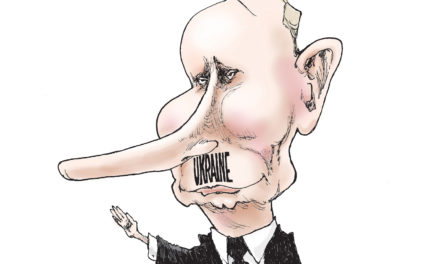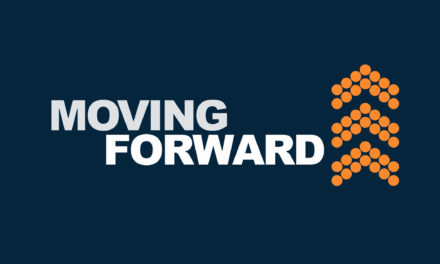It’s time to resurrect tax increment financing (TIF) as a possible incentive for economic growth in Memphis and Shelby County and as an alternative to our overreliance on tax freezes.
The TIF is the favored business incentive in Nashville, and it is a major reason that our capital city issued only five tax freezes in a 10-year period, while we were handing out 415 of them.
Meanwhile, in Chicago, the TIF is credited with the city’s economic turnaround of recent years. On the city’s list of available financial incentives, TIFs are first, and the city has used them heavily to its advantage. Chicago has tailored strategies around tax increment financing to create TIFWorks, which allows businesses in the TIF district to get up to 75 percent of workforce development costs; Small Business Improvement Fund, which uses TIF revenues to fund improvements to small business properties; and the Laboratory Facilities Fund Program, which uses the TIF to attract lab space and technology companies.
The TIF listed in a report — six-pages, single-spaced — that inventories business incentives offered by city and state governments. It’s an impressive list of tools that Chicago has at its disposal.
The list of incentives in Illinois speaks volumes about our well-documented lack of similar incentives in Tennessee and is part of the reason — beyond tradition, a sense of unworthiness and pressures from the development industry — that our economic development experts say they have to use tax freezes to make up for the lack of incentives at the state level.
Rather than make a last-ditch effort to keep the PILOT (payment-in-lieu-of-tax) program from changing, economic development officials would be wise to turn their attention to telling us what a well-rounded arsenal of incentives would look like. We all know that we have to offer some kinds of incentive, and we want something to support. That’s something that our experts can deliver in the form of changes that we can get behind.
Absent a broader context, protectors of the status quo run the risk of the PILOT program in a political environment that will slowly strangle the program to death. Already, there are widespread complaints on the campaign trail, by candidates and supporters, about the $60 million in taxes that are waived each year in tax freezes.
Make no mistake about it, adverse public opinion is like water dripping on a stone. It may look at times like it’s having no effect, eventually, it will erode away the rock. Even in the face of the considerable influence of the real estate industry, it is an inevitable conclusion if no changes are made to the PILOT program.
In truth, the TIF never got a fair hearing in Memphis. A few years ago, Robert Lipscomb, as part of his community development master plan, proposed a number of TIF districts, and the Center City Commission had one of its own in the works. Mr. Lipscomb got one of his requests approved – the much-lauded Uptown project – but the others got a deaf ear. The Center City Commission’s proposal couldn’t even get off the ground.
The reluctance by the Memphis City Council and Shelby County Board of Commissioners to embrace TIFs was directly related to concern about PILOTs. In the legislators’ minds, if tax increment financing was approved without reining in the existing PILOT program, they wondered if local government would be undermining its tax base to the point of no return.
In Nashville and Chicago, where they have witnessed a renaissance in economic growth, there’s been almost no mention of tax freezes. Instead, it’s about the TIF, which allows government to borrow money and build the public infrastructure that a business prospect needs, such as roads and utilities. Government then pays off the debt by taxing the higher values of the development. In other words, business gets the benefits, but not by shifting the tax burden to existing taxpayers.
Nashville has used tax increment financing for a number of projects, including the BellSouth Tower, and late last year, TIF came into play in the negotiations for a new baseball stadium and for the $200 million, 55-story Signature Tower, a residential skyscraper at Fifth Avenue and Church Street. For the skyscraper, $12 million in TIF bonds will be guaranteed by future property taxes from the developer of the building.
In this way, the TIF is sometimes seen as cash up-front to a developer, and there are some complaints in Nashville that it’s handouts to wealthy developers and being used in parts of downtown that aren’t really blighted (a condition in the law creating the TIF).
As Nashville Mayor Bill Purcell contends, the TIF loan doesn’t cost taxpayers anything because it involves property tax revenues paid by the new developments themselves. These days, here, we not only waive taxes for the new business, but then government accepts responsibilities for infrastructure improvements, like roads, interchanges, new exit ramps, etc. Essentially, it amounts to a double hit for local property taxpayers.
TIF is now authorized in 47 states, and although it’s regulated by the state, it’s controlled by the city to help redevelop areas that are deemed “blighted.” When an area is redeveloped, it creates new property taxes. From these taxes, the original property taxes (based on the unimproved values) is paid to the city and county, and the balance (the tax increment) goes into a special fund to subsidize some portion of the redevelopment.
Usually, TIF pays for streets, sewers, parking facilities, land acquisition, planning expenses, job training, demolition and clean-up costs. The annual TIF payments are used to pay the debt service on special bonds. It is this flexibility that makes it so attractive to cities across the U.S. Chicago Mayor Richard M. Daley says it’s the “only game in town.”
Tax increment financing is not perfect. No business incentive is, but it’s time to look beyond PILOTs to a time when we have a more balanced, diverse mix of business incentives in Memphis and Shelby County. Tax increment financing didn’t get anywhere last time it was discussed by local legislative bodies, but perhaps, with some much-needed controls put in place on the PILOT program, it’s time to revisit it.
In leading this review and in creating a new system of incentives, our economic development experts demonstrate their concern to the taxpayers who are footing the bill for all these incentives in the first place.




